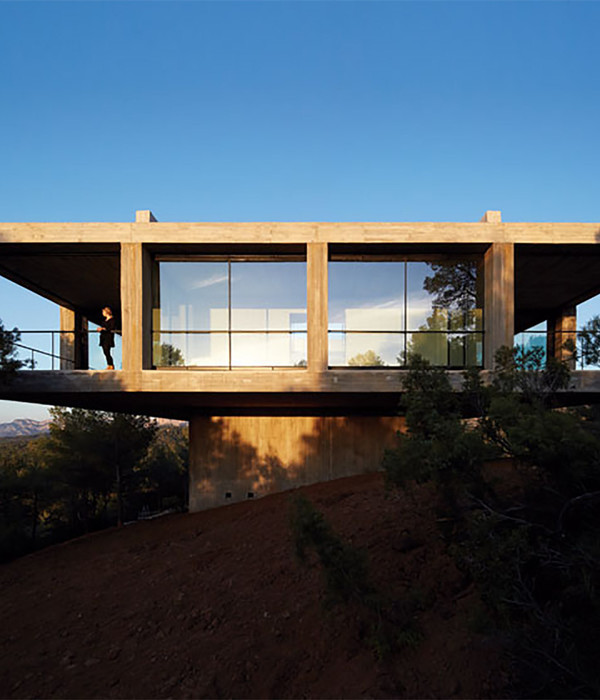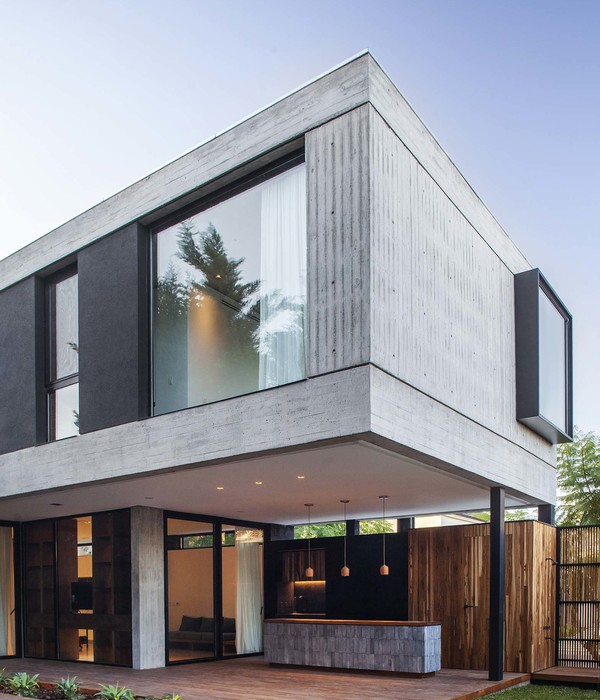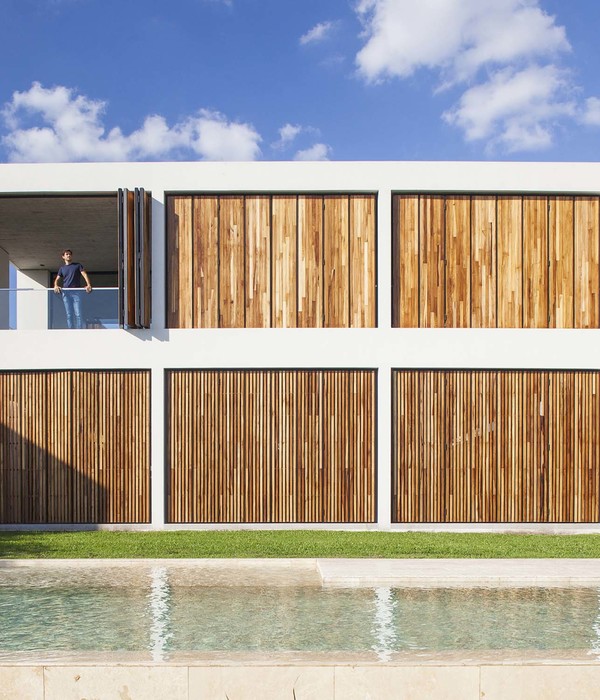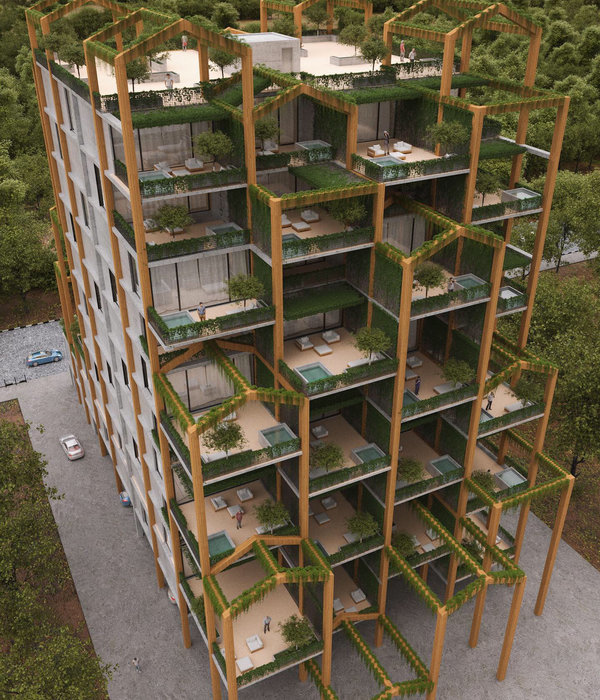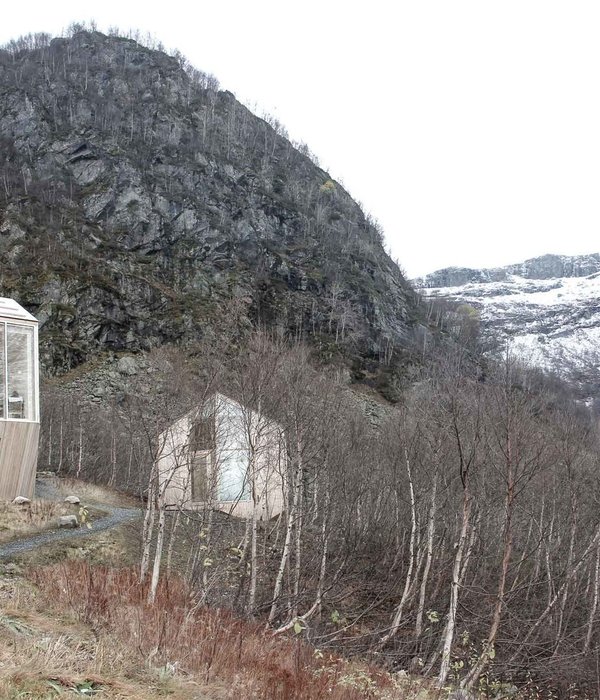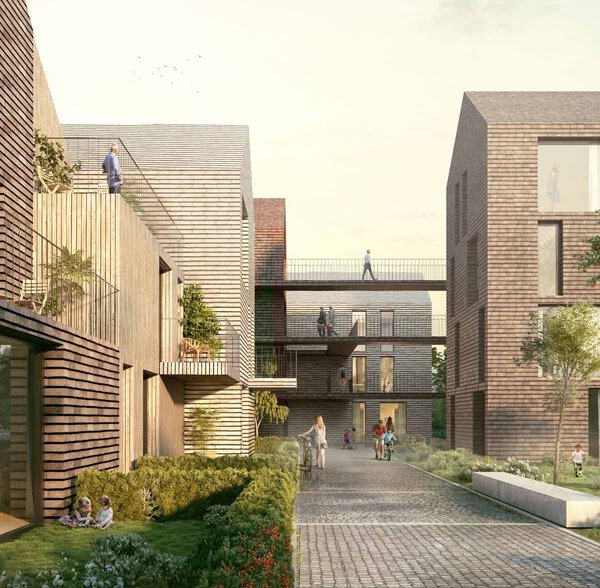项目坐落于具有文化之都之称的中国北京市西城区宫门口四条乙17号。这是一个由三栋老宅围绕着三颗枣树形成的四合院。建筑为木结构并已古老而破旧。该四合院的缺点是三栋建筑分离,不利于空间的使用,对现代人来说生活很不方便。
The project is located No.17 Gongmenkou Sitiaoyi Xicheng District Beijing, China. Xicheng District it also called west city and one of the famous places for culture. This Siheyuan (courtyard surrounded by buildings on all four sides) surrounded by three old jujube trees. Building is wood structure but it is quite old and shabby house. Since three building all separate so there is some disadvantage point. For example, are not conducive to the use of space, and it influence inconvenient for younger generation.
▼四合院入口,the entrance of the Siheyuan (courtyard surrounded by buildings on all four sides)
▼进入后即可看到种植了枣树的庭院,one encounters the courtyard with jujube first
▼从庭院回看入口,looking back at the entrance
本次改造将利用率最高的南屋和东屋两栋房子用玻璃通道连在一起,充分提高了使用率。而且玻璃通道东边做了一个小庭院引入光线,和自然相结合。南屋用于办公,东屋为小会议室,会议桌上空改造出大面积天窗,可观赏枣树和天空春夏秋冬的变化。
This transformation will bring the highest utilization rate of the two houses for the south and east house connect with glass passages, thus improving the utilization rate. Moreover, a small courtyard was built on the east side of the glass corridor to introduce light and combine with nature. South house used for office, east house used for a small conference room. At the same time conference table reforming to large skylight so from skylight able to watch the jujube trees and sky view.
▼南屋与西屋之间的过道通向连接两屋的玻璃通道,the corridor leads to the glass passage that connects the south and east houses
▼玻璃通道东边的小庭院,the small courtyard at the east side of the glass passage
我们的设计保留屋顶木结构的基础上整个屋子的隔墙打通变成一个L型的大空间。把L型的大体块分成为280mm*280mm*280mm 的10000个小体块(小空间),然后根据功能和人的使用习惯减去使用空间,留下的被使用空间和家具部分的小体块,剩下的被使用空间的小体块按营造法式木结构屋顶的搭接关系用竹子搭接出来,从而实现空间穿插和家具的一体化。
Our design keeps the preserves wood structure of the roof and the partition wall of the entire house is turned into an L-shaped large space. The L-shaped block is divided into 10000 small blocks (small space) of 280mm*280mm*280mm, and then used space is subtracted according to functions and people’s use habits, and the used space and small pieces of furniture parts are left. The remaining small spaces of the used space are lapped together by bamboo in order to create a lap joint of the Ying zao fa shi wooden roof, thus realizing the integration of space interposition and furniture.
▼东屋被改造成会议室,面向庭院用大量的玻璃落地窗打开,外加天窗为室内引入日光;the east room is transformed into a conference room, with large windows open to the courtyard and skylight that brings daylight into the inteiror
▼会议室另一侧墙上的开窗以竹为背景,bamboos are used as backdrop for the window opening on the other side of the wall
▼从会议室看向庭院,looking at the courtyard from the conference room
竹子是用现代装配式的手法用螺丝全部固定在一起,并形成具有结构作用的整体体系。利用钢板,铁丝窗帘,玻璃作为辅助材料把整个空间关系变成实体、半透明、透明相互穿插的空间。这是一个将营造法式转换为竹法营造的10000/1的办公室。
Bamboo is completely fixed together with screws using modern assembly methods and forms an overall system with structural functions. Using steel plates, wire curtains, and glass as ancillary materials, the entire spatial relationship is transformed into solid, translucent, transparent interspersed spaces. This is a 10000/1 office which from Ying Zao Fa Shi converted construction of bamboo method.
▼南屋办公空间一览,overview of the southern office
▼竹子是用现代装配式的手法用螺丝全部固定在一起,并形成具有结构作用的整体体系;bamboo is completely fixed together with screws using modern assembly methods and forms an overall system with structural functions
▼用天光照明的卫生间,the restroom lit by daylight
▼项目夜景,project night view
▼项目与其四周环境的关系,the relationship between the project and its surroundings
▼项目平面,the plan after renovation
▼项目原始平面,the original plan
▼剖面A-A,section A-A
▼剖面B-B,section B-B
摄影师:金伟琦 Photography is by Jin Weiqi.
{{item.text_origin}}

